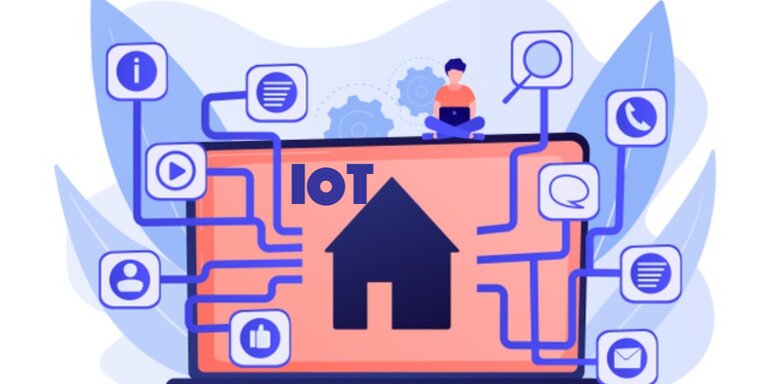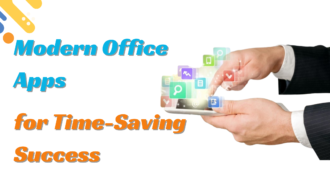Internet of Things: How To Develop A Perfect Application?
- 1 What Is An Internet of Things?
- 2 What Are The 7 Layers Of IoT Development?
- 2.1 1. Perception Layer
- 2.2 2. Network Layer
- 2.3 3. Layereware Layer
- 2.4 4. Application Layer
- 2.5 5. Business Layer
- 3 How To Develop An IoT App?
- 3.1 1. Choose a Suitable Platform for IoT App Development
- 3.2 2. Choose the Hardware
- 3.3 3. Check for Scalability
- 3.4 4. Check Whether Your IoT Application Is Quick or Not
- 3.5 5. Use Security Tools
- 4 What Are The Main Components Of IoT?
- 4.1 1. Hardware
- 4.2 2. Software
- 4.3 3. Cloud
- 4.4 4. Network
- 5 Conclusion
| Quick Summary: In this blog, we will discuss IoT, how to develop an IoT app, and what to keep in mind while developing an IoT app of the future that will turn the tables and profit from this platform. So, without any further ado, let’s get started! |
The 21st century has outshined many people’s imaginations with mind-blowing innovations in this revolution of IoT development. Despite this, not all developers are familiar with IoT app development. According to an anonymous survey, the number of IoT devices is expected to increase to 100 billion from 75 billion at the end of 2030, and a few improvements in 4G connectivity, which will be updated to 5G in terms of increasing IoT, are crucial.
According to a survey conducted by Mordor Intelligence, the global IoT market is expected to increase from USD 761.4 billion to USD 1,386.06 billion by the end of 2026.
What Is An Internet of Things?
Layman’s language defines IoT as a process where all the components are interconnected via a network that uses special electronic equipment. In other words, IoT is a
It is an analogous network connecting real-world objects and supporting the information exchanged without human effort. Its concept is prevalent in mobile software development, significantly simplifying our everyday lives.
In short, IoT is global support for the information society that contributes exceptional services associated with the evolving interoperable information and communication technologies.
IoT Testimonies and Forecasts tells the truth:
2020: $24 billion IoT units worldwide
2020: $267 B2B will spend on IoT
2025: $75 billion over ten devices per person worldwide
2025: $13 trillion in revenue from IoT implementation
What Are The 7 Layers Of IoT Development?
1. Perception Layer
The perception Layer is the topmost layer of IoT architecture. In this layer, multiple sensor layer actuators gather information and pass the data to another layer to take actions based on that information.
2. Network Layer
The next layer after the perception layer is the network layer, the layer between perception and the middleware layer via networking technologies, also called the communication layer. This layer helps to transfer data securely and keep it confidential.
3. Layereware Layer
Middleware Layer offers advanced features such as capabilities to take actions, compute, process, and much more. This layer stores your device address and provides an appropriate name tLayert device that is obtained from sensors.
4. Application Layer
Last, the Application layer manages all your application-based processes with information from the middleware layer.
5. Business Layer
Finally, the business layer performs the programming tasks embedded within the apps, such as creating graphs, improving devices, generating flowcharts, etc.
How To Develop An IoT App?
1. Choose a Suitable Platform for IoT App Development
When it comes to apps, there are multiple options available for application development. You can pick the one that suits your business and focus on what innovations it supports and how much it’ll cost. To make it easier to choose the right platform for app development, here are a few top platforms from which you can pick any and start your development process:
- Oracle IoT
- HomeKit
- Kaa
- Android Things
- Ubidots
- ThingWorx
- Azure IoT Suite
- Xively
- IBM Watson
These IoT development platforms try to resolve the complex issue in application development that allows IoT developers to link devices from various vendors that implement different procedures into one unified system.
2. Choose the Hardware
You must select equipment from other device markets if you’re not producing your hardware for application development. It is essential to check whether the tools you choose represent your product’s requirements and are reliable for your project’s success. So, while selecting the hardware, ensure the project is trustworthy and guarantees high-quality IoT applications.
It would be best if you also chose application development boards for Smart Bluetooth and WiFi from microcontroller-based boards like:
- Arduino Uno
- C.H.I.P
- Raspberry Pi
- Mediatek Linkit One
- Intel Edison
- Particle Photon
- Udoo Neo
- Tessel
- LightBlue Bean
- Adafruit Flora
3. Check for Scalability
You must check the scalability in advance for application development because your app will undoubtedly stay relevant depending on it. It takes care of various devices, procedures, and increasing amounts of data.
4. Check Whether Your IoT Application Is Quick or Not
Every IoT app needs to be incredibly quick. IoT mobile apps are developed to share information from one location to another where the lag rate is too high.
Imagine there is a connected auto that won’t immediately respond to your commands, which will result in losing your potential customers. Therefore, it is said that performance and speed are the two main factors for application development.
5. Use Security Tools
The safety and security of your software are the primary concerns when developing a software application that protects your software app. As we all know, IoT apps are created to share information where multiple devices share a single network, so the risk of losing data increases. Therefore, using security tools is essential.
Here are a few couples of ideas to ensure security in your software application:
- Choose hardware vendors carefully
- Use proven IoT platforms for apps
- Think about network assaults and physical assaults
- Use protected networks
- Apply best practices for app security
From various locations where people use IoT apps the most- healthcare devices, their cars and trucks, and residences — these attacks can also expose your personal and sensitive information. So, ensure you are utilizing security tools while developing your IoT application.
Before discussing the main components of IoT, let’s know about the benefits you’ll get while deploying an IoT application:
- Optimize resource consumption
- Enhance business opportunities
- New revenue streams
- Leverage real-time control
- Excellent customer experience
- Improve control of operation processes
- Tracking real-time market behaviour
- Mobility and agility
- Fine-tune services and products
- Improve monitoring
- Efficiency and productivity
- New capabilities to act
What Are The Main Components Of IoT?
Every IoT system consists of four main components:
1. Hardware
The hardware is the main component for every IoT system that offers low-energy sensors and works over Bluetooth to connect to the internet. You must check whether you require custom or third-party hardware to implement your idea in your IoT system.
2. Software
Your IoT system must consist of cloud-based software, whether for web or mobile. This software is simply a dashboard that manages all IoT devices connected to it, gathers information from sensors, and shows it to users.
3. Cloud
The cloud is the most critical technology for IoT software application development because it processes and manages data. Cloud technology doesn’t require physical resources to store and manage your data.
4. Network
A network is required to share mobile app data from one location to another, through which the data can be transmitted. These devices are linked in mobile apps within the IoT system.
Conclusion
Various tools and training resources will allow you to develop an IoT software application easily and quickly. The development of IoT applications will grow in the coming years, indicating the great potential of the IoT ecosystem. IoT is one of the most promising sectors in the IT industry, helping materialize each customer’s vision and experience.
The demand for developing IoT software applications is increasing day by day. It sets people’s lives free and the necessity to remember little things. Network stability, security, and speed are the three essential considerations that should be considered while developing an IoT app.

















